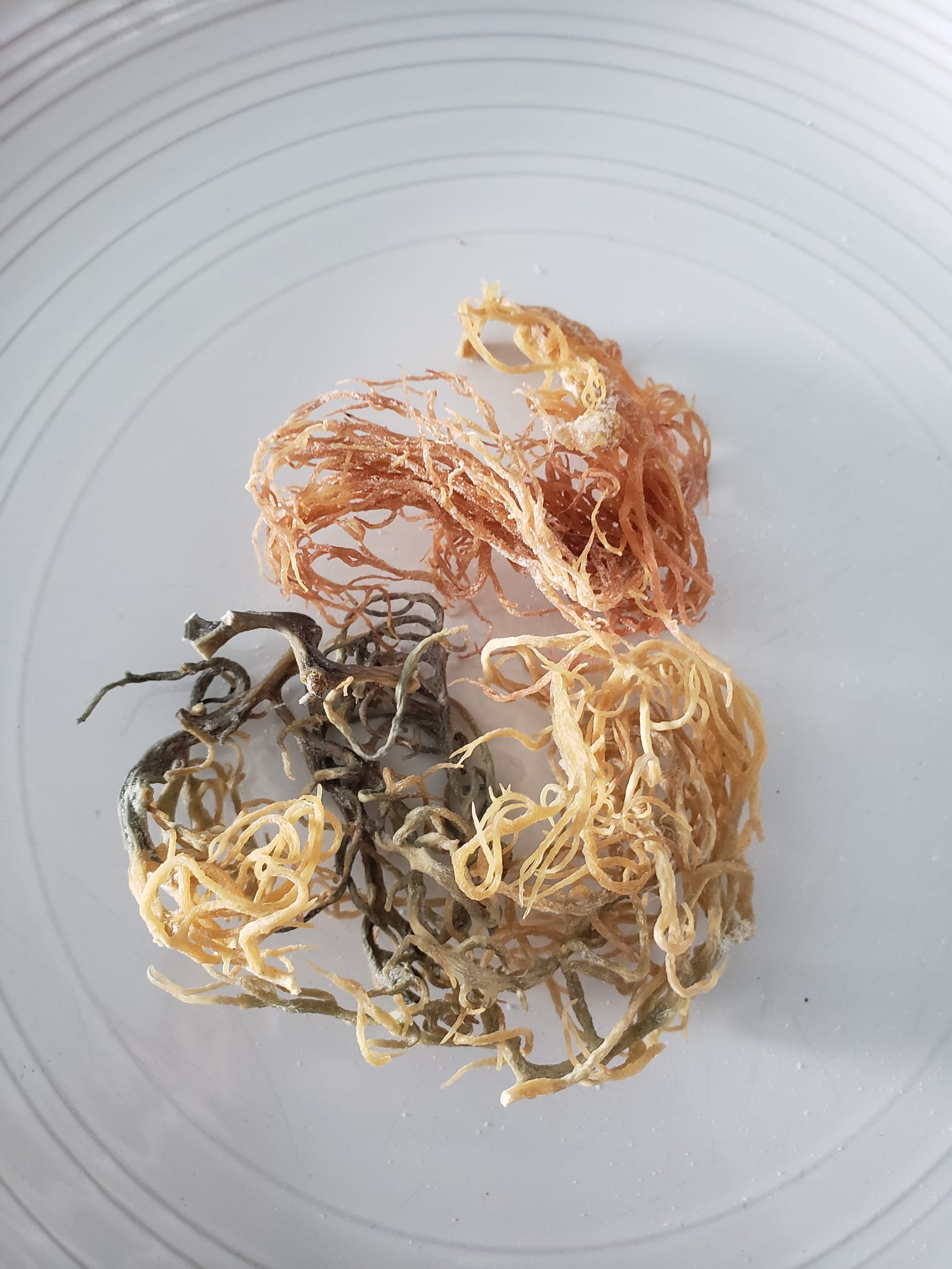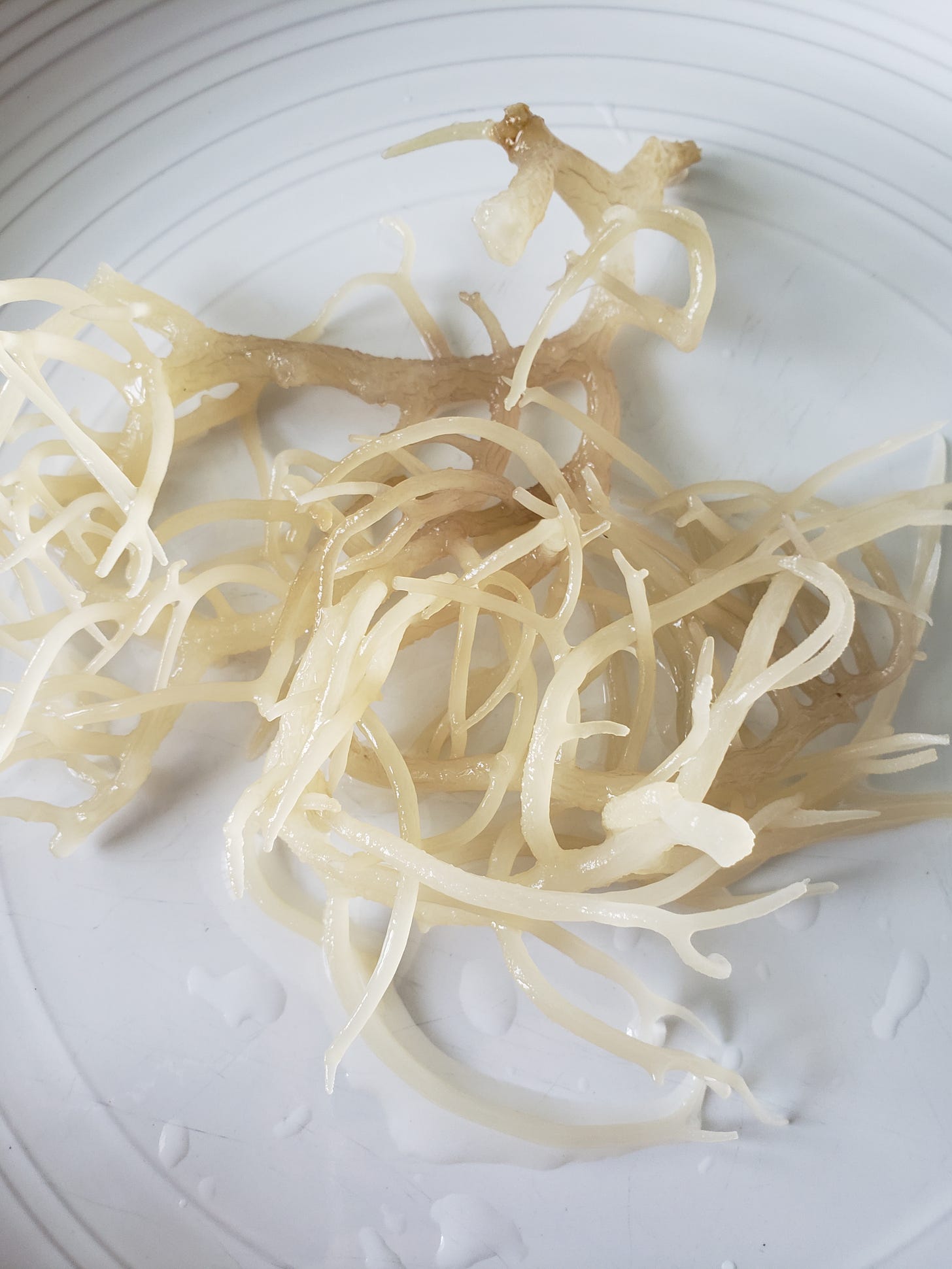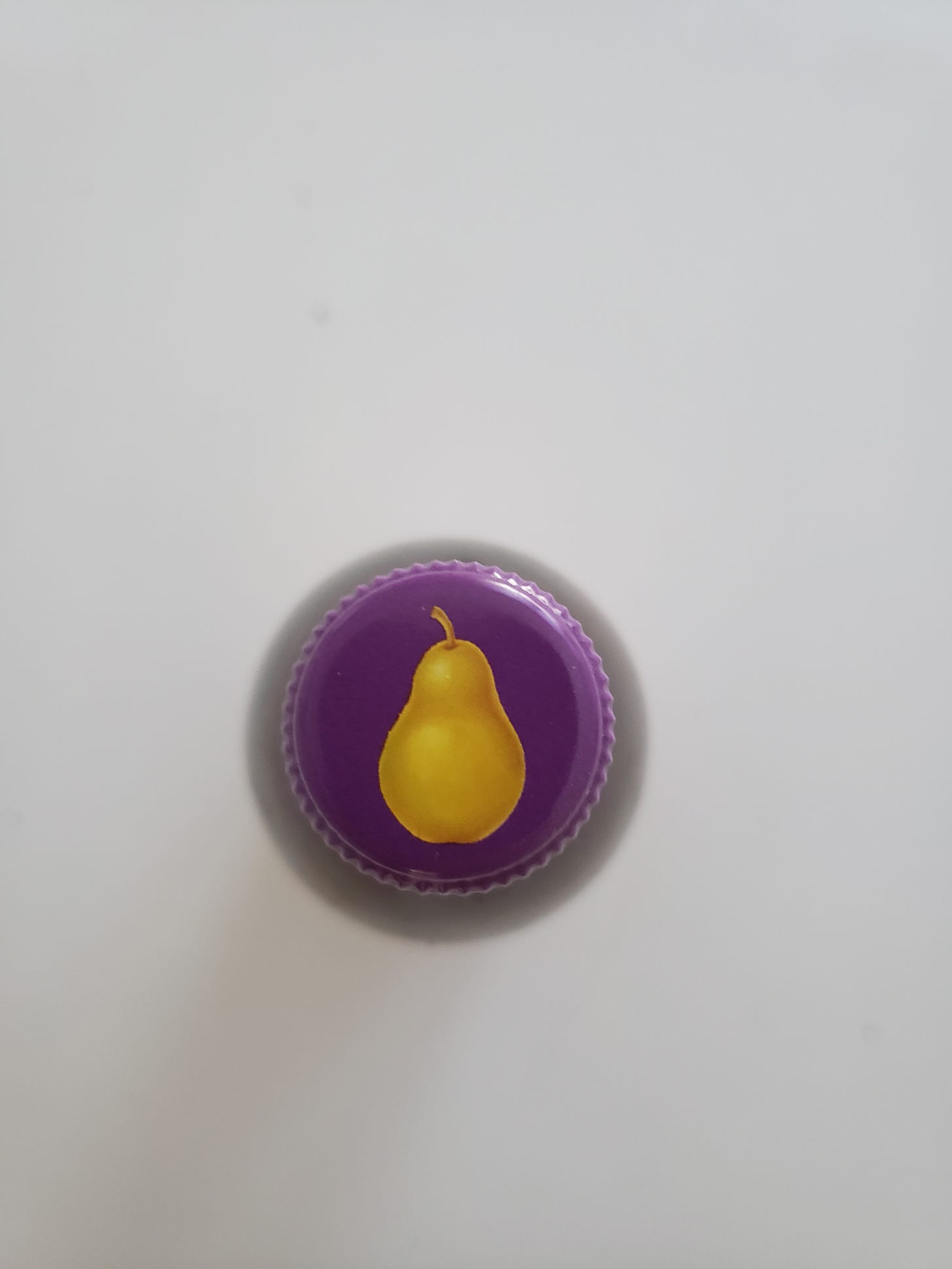Caribbean Drinks of Love and Nostalgia
A leisurely afternoon in the tropics. A sultry sunset over the sea.
Welcome new Weird Drinkers! And thank you to all who have shared these stories.
Scorched by the intense heat of the tropics, the beverages of the Caribbean—much like the region’s traditions—are a vibrant swirl of new and old, salted with history and formed under the pressure of nature and politics. This is Part 1 of a series on Caribbean drinks that occupy a special place in the hearts of many who are from the region, or those longing to return.
We drink because we’re thirsty, but sometimes that thirst has nothing to do with hydration. Sometimes we’re “thirsty” thirsty—and a beverage is there to set the mood. Sometimes it’s there because we’re in a mood.
As the year draws to a close and love and nostalgia surround Weird Drinkers, take a trip to the Caribbean. Savor a cold drink under a blue sky for an afternoon of laughs and stories, or chug a special concoction as the sun sets and a red hot night of passion awaits.
Sea Moss
Just because a drink is associated with the Caribbean, doesn’t mean that’s where its roots—or holdfast, in this case—are. Sea moss is a drink derived from a type of red algae, called Chondrus crispus, deeply associated with the North Atlantic. (A “holdfast” is a root-like structure used by algae, seaweed and other organisms to anchor themselves to rocks and other substrates.)
Also called Irish moss, sea moss has a storied history. It helped stave off starvation during the Irish potato famine in the 1840s. Then, by the 20th century, it was regarded as an aphrodisiac.
Today, sea moss is popular not just in the North Atlantic and Caribbean, but around the world—and it hasn’t lost its mysterious sexual associations.
Dehydrated “rainbow” sea moss from St. Lucia, ready to be rinsed and reconstituted.
A Barbadian version of the beverage, made creamy with milk and sweetened with sugar, is purported to provide a “strong back” for male drinkers. A peanut-based version is popular in Jamaica, where it is sold by “punch men.”
“Sea moss provides a general feeling of fortitude,” said Derek Went, owner of Barbados-based Went Caribbean Inc., a food and beverage producer who makes sea moss gels. Sea moss is packed with minerals, which stimulate the nervous system and provide heightened sexual energy to both men and women, he said.
While the red algae used to be harvested off the coast of Barbados, particularly in the northern part of the island, overharvesting has made wild sea moss difficult to find for today’s foragers.
Went gets his sea moss from floating sea moss gardens, made of wood and strands of rope anchored in the ocean. These reef nurseries provide a reliable source of mature sea moss, which is clipped from its holdfast and bleached and dried in the sun. The aquatic wonderlands also provide cover for other sea organisms.
Sea moss production is far from a cottage industry. Mass-produced versions of the thick, viscous beverage are sold in gas stations and grocery stores throughout the Caribbean. Plenty of warm spices, like cinnamon and nutmeg (and a generous helping of sugar) over a base of milk and soaked oats give the bottled version of sea moss a sweet and spicy flavor.
While these beverages are easier to find, it’s harder to tell how much sea moss is actually mixed into mass-produced versions of the beverage, said Went. “It taps into a social psyche, marketed for better sex,” he said, arguing that small-batch sea moss provides an overall greater degree of wellness. “It’s intended to capture a section of the market who are insecure about their sexual performance.”
For those wanting more control over how much sea moss they’re consuming, plenty of recipes exist.
At its most basic, the harvested and dried sea moss is reconstituted in a series of cold water baths until it doubles or triples in size.
Rehydrated sea moss. The colors are bleached from drying under the sun.
Rehydrated sea moss is sometimes boiled in a fresh batch of water and blended with sugar, spices and other ingredients, like peanut butter or fruit. Other times the boiling step is skipped altogether, and the sea moss is simply blended with a mix of flavorings or processed into a gel.
On its own, raw, semi-translucent sea moss gel is evocative of the ocean on a hot, sunny day, said Went. It’s slightly salty and grassy, with a light seaweed aroma. The algae thickens any liquids it is added to, because of the carrageenan it contains. Mixing it with a dairy base gives this love potion a thick texture and a milky appearance.
Whether the beverage’s libido-enhancing qualities can be attributed to the old adage, “You are what you eat,” or if its qualities are a product of its minerals, sea moss continues to be a popular beverage.
“Its reputation is well-deserved,” said Went. “It’s such a nutritious drink—it’s a functional food.”
Peardrax
This pear-flavored soft drink is wildly popular in the southernmost reaches of the Caribbean, especially as the Christmas holiday approaches. Peardrax, and its apple-flavored cousin Cydrax, are two sweet sodas widely available in Trinidad and Tobago, an island nation off the coast of South America.
Today, Peardrax is made from a mixture of carbonated water, sweetener, fermented pear and apple juice, preservatives and artificial flavoring and coloring. It comes in bottles wrapped in purple labeling and a simple cartoonish pear on its lid.
But those ice cold purple bottles of Peardrax strike the chord of childhood for many in Trinidad, and throughout the Caribbean.
“We didn’t ever have apples and pears as children growing up. If we did, it was very special,” explained Went, who is originally from Trinidad. Individual pears or apples were cut into pieces and each person would get a piece, he said.
To trace the popularity of Peardrax in Trinidad and Tobago, Weird Drinkers need to travel across the Atlantic Ocean to Whimple, a village near the southern coast of England. In the 1800s, a company called Whiteway’s began bottling and selling pear and apple cider. Peardrax and Cydrax, which were eventually bottled in tall, brown bottles with “Whiteway’s” embossed on the bottle’s shoulder, grew in popularity in the United Kingdom.
“Peardrax and Cydrax were linked to Christmastime, as being a special drink,” Went said. “It was imported from England and seen as a sort of sign of the mother country being beneficent. It was not cheap.” Even the tall, brown bottles would be saved after their precious contents were consumed.
But by the 1980s, tastes in the UK had changed enough that the two beverages were withdrawn from that country’s market. Meanwhile, Peardrax continued to prove popular across the Atlantic.
Trinis still drink Peardrax by the liter and the beverage shows little signs of waning popularity in the West Indies.
Today, the drink’s recipe has evolved and its ownership has changed. The brand is owned by Caribbean Distribution Partners Limited, which operates out of Port of Spain, Trinidad. Artificial flavorings and colorings lend the drink what some describe as a “processed” flavor, compared to the Peardrax of old.
Imported apples and pears aren’t as hard to come by in West Indian supermarkets as they used to be. Even still, tall brown bottles of Peardrax and Cydrax are available for shoppers, as a new generation of Caribbean children is introduced to a soft drink strongly associated with tropical holiday cheer.
Materva
Leaving the southern reaches of the Caribbean, the next stop for Weird Drinkers is further north. Materva is a soft drink that originated in Cuba, but is now made in Miami, Florida.
Produced by Miami’s Cawy Bottling Company, which began operations in 1971, Materva is described as “the gold standard in soft drinks” by its producers. First introduced in 1920, the sweet, carbonated beverage gets its distinct flavor from yerba mate extract, a flavoring derived from a tree native to the hot plains of South America.
More frequently consumed as a hot or cold drink, yerba mate is made by soaking the leaves and stems of the evergreen tree Ilex paraguariensis in water. (Ilex paraguariensis is a relative of the famous raw ingredient behind Black Drink, Ilex vomitoria.)
Materva doesn’t quite have the same smoky, green tea flavor of traditionally hot- or cold-brewed yerba mate, even if the soda’s label does include a drawing of the famous yerba mate gourds in which the beverage is served.
The caffeinated beverage is “a Cuban favorite,” according to beverage retailer Soda Pop Stop’s tasting notes. “It tastes like a sparkling tea soda with a cream finish.”
But Materva is far more than a tea soda served alongside a Cuban sandwich. It’s associations with Cuba have been used by politicians as a symbol of solidarity with Cuban-Americans—particularly those who left the island after Fidel Castro came to power.
In 2010, a campaign stop by President Barack Obama in south Florida concluded with the then-president returning to Washington D.C. with a can of Materva in his hand. According to a report of the episode, Obama was informed that many Cuban-Americans find Materva to be far superior to the quintessential American soft drink: Coca-Cola.
Nevertheless, Materva also has its critics. Materva was described as “almost like a ginger ale, like a syrupy sort of thing,” by John Barclay, an entrepreneur who founded the yerba mate-flavored soda White Label Mate.
“It's like to mate, what ginger ale is to ginger...you don't really taste it, but it's supposedly in there,” according to Barclay’s business partner, Jesse Rudoy, from an interview with Paper Magazine.
But what it lacks in flavor (at least according to some Weird Drinkers), it makes up for in nostalgia.
Materva has strong associations with island traditions from a life left behind for many Cubans and Cuban-Americans. Even Cuban-Americans who prefer other soft drinks know a friend or grandparent who swears that the best accompaniment to a plate of Cuban comfort food is an ice cold can of Materva.






